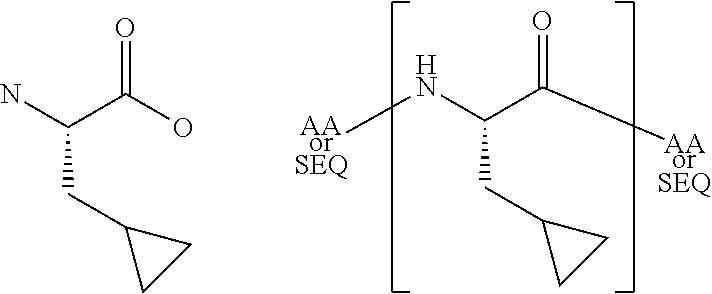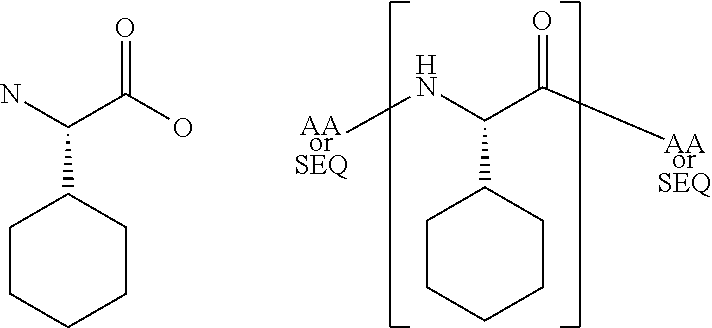Peptide Immunogens
a technology of peptides and immunogens, applied in the field of tcell antigens, can solve the problems of limited success of peptide-based vaccines in the clinic, lack of success in cancer treatment, and restricted immune response to t-cell tolerance, and achieve the effect of slowing down the off-ra
- Summary
- Abstract
- Description
- Claims
- Application Information
AI Technical Summary
Benefits of technology
Problems solved by technology
Method used
Image
Examples
Embodiment Construction
[0068]The present invention provides a peptide derivative that is an MHCI restricted antigen, and is derived from a parent peptide 8 to 11 amino acid residues in length, preferably 9 or 10 amino acid residues in length, wherein the peptide derivative contains a non-natural amino acid substituted in place of a naturally occurring amino acid residue at one or more primary anchor positions, preferably at two primary anchor positions, and more preferably at one primary anchor position. Thus, the invention provides a peptide derivative of a MHCI restricted parent antigen (e.g., parent peptide or parent epitope), the derivative comprising a non-natural amino acid in at least one primary anchor position. In some embodiments, the anchor position is Position 2 (P2). In some embodiments, the anchor position is at the C-terminus (Pa). In some embodiments, there is a non-natural amino acid both in position P2 and in position Pa See below for additional anchor positions which can be taken by a n...
PUM
 Login to View More
Login to View More Abstract
Description
Claims
Application Information
 Login to View More
Login to View More - R&D
- Intellectual Property
- Life Sciences
- Materials
- Tech Scout
- Unparalleled Data Quality
- Higher Quality Content
- 60% Fewer Hallucinations
Browse by: Latest US Patents, China's latest patents, Technical Efficacy Thesaurus, Application Domain, Technology Topic, Popular Technical Reports.
© 2025 PatSnap. All rights reserved.Legal|Privacy policy|Modern Slavery Act Transparency Statement|Sitemap|About US| Contact US: help@patsnap.com



